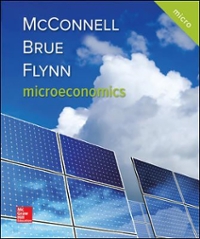(ii) Find the subgame perfect Nash equilibrium(s) when X = 4. (iii) Does the incumbent firm become more or less likely to fight, as X becomes large? (C) Suppose that by paying Z to build a state-of-the-art manufacturing plant, the start-up can lower its marginal cost, and will no longer go out of business if the incumbent chooses "fight". If the start-up builds the new plant, the payoff of (enter, fight) becomes (0,0) and all other payoffs are reduced by Z for the start-up. If the start-up doesn't build the new plant, all payoffs remain the same as above. Assume that the start-up decides whether to build the manufacturing plant before it decides whether to enter the market. (i) Suppose X = 4 and the start-up makes the investment. Find the subgame perfect Nash equilib rium (s). (ii) What is the smallest value of X for which the start-up will choose to make the investment? ( You should get an equation in terms of Z.)Game: market entry and the long-run. Suppose we have a sequential game with two firms: a start-up that is choosing whether or not to enter the market, and an incumbent firm that is deciding whether to fight the start-up if it enters (e.g. engage in a price war). The payoffs are as follows: . if the start-up chooses "do not enter", then the incumbent gets a payoff of X and the start-up gets a payoff of 0. Here, X is a number that represents monopoly profits. . if the start-up chooses "enter" and the incumbent chooses "accommodate", then the two firms split the market, and each firm gets a payoff of = X. (L.E. they form a duopoly and split the market.) . if the start-up chooses "enter" and the incumbent chooses "fight", then the two firms engage in a price war and the start-up goes out of business (exits the market). In this case, the incumbent gets a payoff of X - 2, and the start-up gets a payoff of -2. Intuitively, the incumbent pays a short-run cost by choosing to fight, but is able to preserve its monopoly in the long-run and consequently, to still earn monopoly profits X. (A) In the space below, draw the game tree for the sequential game where the start-up moves first. (B) Let's consider the equilibrium of this game. (i) Find the subgame perfect Nash equilibrium(s) when X = 2








